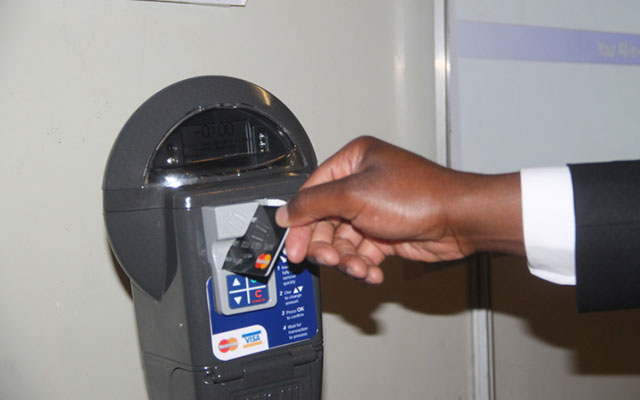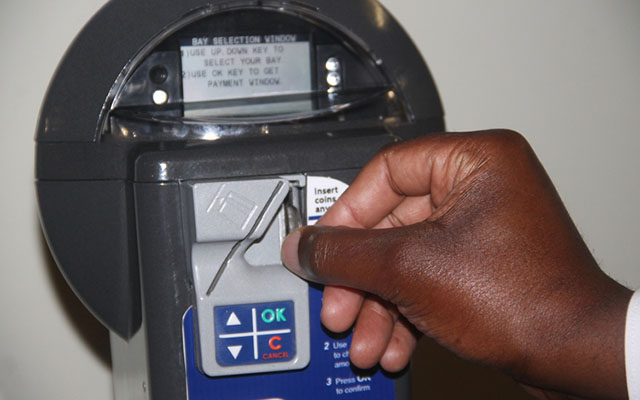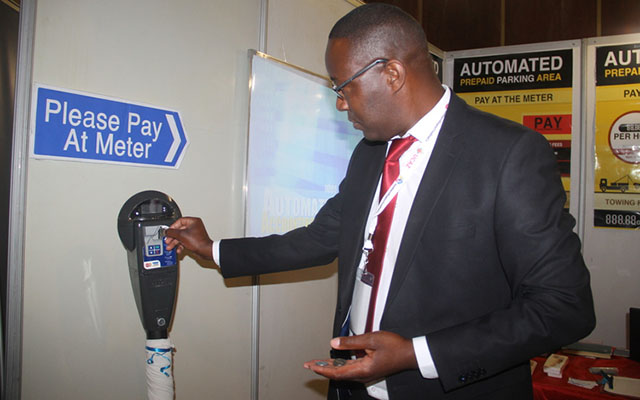Possible answer to Harare’s parking woes

Leroy Dzenga Features Writer
Harare’s city parking has been chaotic, it is rare to walk around the Central Business District and miss a clamped vehicle.
Harare’s traffic management is a matrix of two contrasting figures, motorists who believe parking tariffs are too high as well as city fathers who would like to maximise on every revenue avenue available.
But there is a possible way to which both parties could benefit. A digital solutions firm has come up with an electronic traffic management system which could potentially cut the city’s work in half together with the motorists’ parking expenditure.
Termed the Enhanced Parking and Enforcement Management System — the digital innovation seeks to ensure accurate parking charges and limit underhand dealings.
Zemqos Incorporated, is seeking to re-introduce electronic traffic management system in Zimbabwe. Mr Zvarevashe Masvingise, the organisation’s regional director for East, West and Southern Africa says they may have come up with solutions for most headaches that have been around urban traffic management in Zimbabwe.
“After doing feasibility studies across different countries including Zimbabwe from 2010 up to 2013, we found that there is a need for Automated Parking Metre Systems (APMS) to efficiently manage traffic especially parking in urban areas,” Mr Masvingise said.
Unlike the current system which charges $1 as its minimum parking time, the APMS uses accurate billing.
“Motorists have the freedom and choice to make a payment for the specific time they are going to be parked at a bay,” said Mr Masvingise.
Under the current system, if a motorist wants to spend 10 minutes in a parking bay, they have to pay $1 which covers an hour. They have to adhere to the minimum tariff even if they do not wish to exhaust the whole hour in the same bay.
Mr Masvingise said their innovation seeks to allow motorists to pay for the exact time they will be parked in a bay, be it five minutes or 10 minutes.
At a time where cash is getting difficult to come by, APMS will be offering a possible solution with a multi payment feature.
“The system accepts multiple payment options which include cash and credit cards.
It is designed to accept the bond notes and coins, so motorists will be spoilt for choice in as far as paying convenience is concerned,” Mr Masvingise said.
If implemented, the system will increase the much needed accountability as it records every car that drivers into a parking bay, this eradicated underhand dealings that may have been going on between some motorists and parking attendants.
“Through the integration of the meter and sensors, the system will detect occupied and unoccupied parking spaces. These have to tally with the reconciled money at the end of each day,” Mr Masvingise said.
Instead of having human stewards on the streets who exist merely to receive payment, the human capital may be redirected to other duties where their productivity will be more meaningful.
The APMS system will come with automated enforcement, this means even in the absence of human beings who collect money, non-compliance will have consequences.
“For motorists who may want to try to evade paying, there are digital gadgets that will alert law enforcement agencies who will attend to the violations,” Mr Masvingise said.
Even when a motorist leaves their car parking on a bay, they can add money to their tab even without going back to the bay through mobile payments system if they are timed out.
Responding to a question on whether their system is fortified from tampering and hacking, he said they have a special arm in their organisation that exists to minimise chances of unauthorised interference.
“We have a research department that focuses on mitigating risks. We also don’t work in isolation we are engaging local universities so that they help with their expertise in this regard,” said Mr Masvingise.
While there have been concerns with the use of digitalised systems as opposed to job replacements Mr Masvingise said their innovation seeks to increase efficiency not replace personnel.
“The meter is there to ensure that there is a sustainable business model which can save money for local authorities. Once the money is saved there is room to create more employment through reinvestment,” he said.

The innovation allows motorists to pay for the exact time they will be parked in a bay, be it five minutes or 10 minutes
There is confidence that if implemented, the system will work since it is not entirely new to the country.
“Electronic meters have been in existence even in the past. If you visit cities like Bulawayo you will see some of the old equipment still in place. What we are offering is a more user friendly and modernised version of what was used in the 1990s,” Mr Masvingise said.
Most local authorities have been bedevilled by accountability concerns. One of the key features offered by the system is that all transactions are traceable which makes it easy for auditing. Among the existing policies in Zimbabwe, the automated parking system will fit into the ease of doing business.
“Our aim is to ensure that we are not lagging behind in terms of traffic management infrastructure. We also want to contribute towards and compliment measures being pursued by Government in enhancing service delivery and ease of doing business,” Mr Masvingise said.
According to Mr Masvingise, a number of local authorities have expressed interest in their system. It may not be too long before the rollout begins.
“Although I cannot reveal much, negotiations are currently underway and there has been positive responses from a number of local authorities,” Mr Masvingise said.
If the system uptake is favourable, there is an opportunity for employment that comes attached to it.
“The software for the system was tailor made for the Zimbabwean market by Zimbabwean developers. We only get key components from an international supplier so as to stay abreast with international trends but installation and assembly will be done in Zimbabwe,” said Mr Masvingise.
Apart from Zimbabwe, Zemqos has also supplied electronic traffic and parking management systems in a number of countries in East and West Africa and they say it has been operating smoothly.
Should the Harare City Council and other local authorities choose to incorporate the system into their operations — they may avert the wage bill question which has emerged over the months.
The system is also in tandem with national monetary policy that pushes for wider use of local currency, plastic and mobile money. This will bring with it the liberty to direct the resources used to pay the attendants on the streets to other pressing avenues of service delivery.
An electronic traffic management system is also expected of a city chasing the World Class City Status by 2025.
Other African cities like Johannesburg and Nairobi have already adopted the method to stay in sync with global trends.








Comments